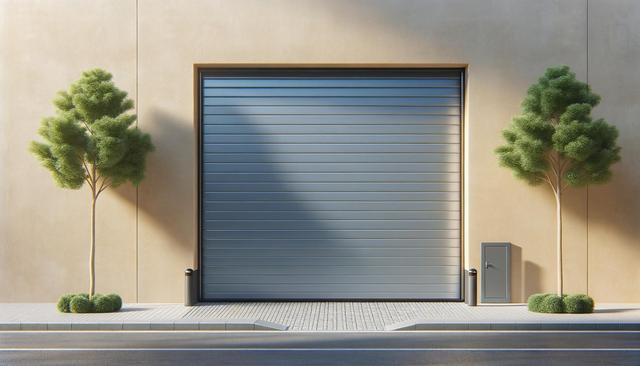Understanding the Functionality of Roller Garage Doors
Roller garage doors are designed to open vertically and roll up into a compact coil above the garage opening. This design differs from traditional up-and-over or sectional doors, which require more internal or external space to operate. The roller mechanism is especially beneficial for garages with limited headroom or driveways that open directly onto a street. These doors are typically made from horizontal slats of galvanized steel or aluminum, which provide both durability and resistance to weather conditions.
The mechanism of roller garage doors can be either manual or automated. While manual versions use a simple pulley system, automated models come equipped with electric motors, remote controls, and safety features such as obstruction sensors. This flexibility allows homeowners to select a configuration that suits their budget, lifestyle, and security needs.
Advantages of Installing a Roller Garage Door
There are several practical advantages to installing a roller garage door, making it a popular choice for both residential and commercial properties. One of the primary benefits is its space-saving design. Because the door rolls vertically without swinging outwards, you can use the full length of your driveway and park closer to the garage without blocking the door’s operation.
Additional advantages include:
- Enhanced insulation properties, which help maintain indoor temperatures and reduce energy costs
- Improved security through robust locking mechanisms and tamper-resistant materials
- Low maintenance requirements compared to other types of garage doors
- Modern aesthetic appeal that complements various architectural styles
These features contribute to the door’s practicality and long-term value, especially in climates with variable weather or in locations where space efficiency is critical.
Material Options and Customization
Roller garage doors are available in a variety of materials, each offering distinct advantages depending on the homeowner’s priorities. Steel is a common choice due to its strength and affordability, while aluminum provides corrosion resistance and a lighter weight profile. For those seeking premium options, insulated roller doors contain foam-filled slats that enhance thermal efficiency and noise reduction.
Customization options also allow homeowners to tailor the appearance and functionality of their roller garage door. These include:
- A variety of colors and finishes to match the exterior of your home
- Window inserts for natural lighting
- Motorized operation with smart home connectivity
- Manual override systems for power outages
Such flexibility ensures that roller garage doors can be adapted to suit both aesthetic preferences and specific usage needs.
Installation Considerations and Planning
Before installing a roller garage door, several factors should be considered to ensure optimal performance and longevity. Professional installation is highly recommended, as proper alignment and secure mounting are essential for smooth operation and safety. Additionally, accurate measurements of the garage opening are crucial, especially if the space has irregular dimensions or structural features that could obstruct the door’s movement.
Other important planning aspects include:
- Assessing power supply needs for automated doors
- Ensuring adequate clearance for the door roll at the top of the garage
- Choosing between internal or external roll housing based on space and aesthetic preferences
- Verifying local building codes or homeowner association guidelines
Taking time to evaluate these elements during the planning phase can prevent costly adjustments after installation and ensure that the door performs reliably for years to come.
Maintenance and Longevity of Roller Garage Doors
Regular maintenance is key to maximizing the lifespan of a roller garage door. Fortunately, these doors require minimal upkeep compared to more complex systems. A monthly visual inspection can help identify early signs of wear, such as fraying cables, misaligned tracks, or dirt buildup that may affect the door’s movement.
Recommended maintenance steps include:
- Cleaning the tracks and slats to remove debris and prevent jamming
- Lubricating moving parts with an appropriate garage door lubricant
- Testing the safety mechanisms, especially for motorized doors
- Scheduling annual professional servicing to check electrical components and alignment
With proper care, a well-built roller garage door can last 15 to 20 years or more. This durability, combined with its functionality and style, makes it a worthwhile investment for homeowners looking to enhance their property’s value and usability.
Conclusion: Choosing the Right Roller Garage Door for Your Needs
Roller garage doors offer a combination of efficiency, security, and visual appeal that suits a wide range of residential and commercial needs. Whether you’re upgrading an existing garage or building a new one, considering factors such as material, automation, and installation requirements can help you select a door that aligns with your expectations. With the right setup and regular maintenance, a roller garage door can provide reliable performance and enhance the overall convenience of your home for many years.












